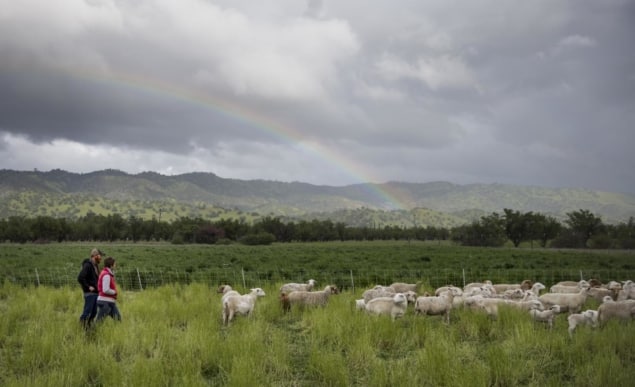
Forests absorb roughly one quarter of the carbon dioxide pollution produced by humans worldwide. Yet in California this century, grasslands and rangelands will be more resilient carbon sinks than forests, a new study has found.
“Looking ahead, our model simulations show that grasslands store more carbon than forests because they are impacted less by droughts and wildfires,” says Pawlok Dass of the University of California Davis, US. “This doesn’t even include the potential benefits of good land management to help boost soil health and increase carbon stocks in rangelands.”
Whilst forests mostly store carbon in woody biomass and leaves, grasslands sequester most of their carbon underground in roots and soil, where it largely remains even after a fire.
Since 2010, about 130 million trees have died in Californian forests due to high tree densities combined with climate change, drought and bark beetle infestation, according to the US Forest Service. Eight of the state’s 20 most destructive fires occurred in the past four years, with the five largest fire seasons all taking place since 2006.
“In a stable climate, trees store more carbon than grasslands,” says Benjamin Houlton, also of the University of California Davis. “But in a vulnerable, warming, drought-likely future, we could lose some of the most productive carbon sinks on the planet. California is on the frontlines of the extreme weather changes that are beginning to occur all over the world. We really need to start thinking about the vulnerability of ecosystem carbon, and use this information to de-risk our carbon investment and conservation strategies in the 21st century.”
California’s cap-and-trade market is designed to reduce the state’s greenhouse gas emissions to 40% below 1990 levels by 2030. The study indicates that grasslands should be given opportunities in the market, according to a UC Davis press release.
The findings could inform similar carbon offset efforts around the globe, particularly those in semi-arid environments, which cover roughly 40% of the planet.
Dass, Houlton and colleagues modelled four scenarios: a substantial decline in carbon emissions, with up to 1.7°C of temperature rise by 2100; business as usual, resulting in up to 4.8°C of warming; periodic drought; and megadrought, lasting for a century or more.
California’s grasslands were more reliable carbon sinks than trees in all but the first scenario. Grasslands continued to store some carbon even during the team’s simulations of extreme drought.
“Trees and forests in California are a national treasure and an ecological necessity,” says Houlton. “But when you put them in assuming they’re carbon sinks and trading them for pollution credits while they’re not behaving as carbon sinks, emissions may not decrease as much as we hope.”
As long as trees are part of the cap-and-trade portfolio, the researchers note, protecting that investment through strategies that would reduce severe wildfire and encourage drought-resistant trees, such as prescribed burns, strategic thinning and replanting, would likely reduce carbon losses.
The team reported the findings in Environmental Research Letters (ERL).



